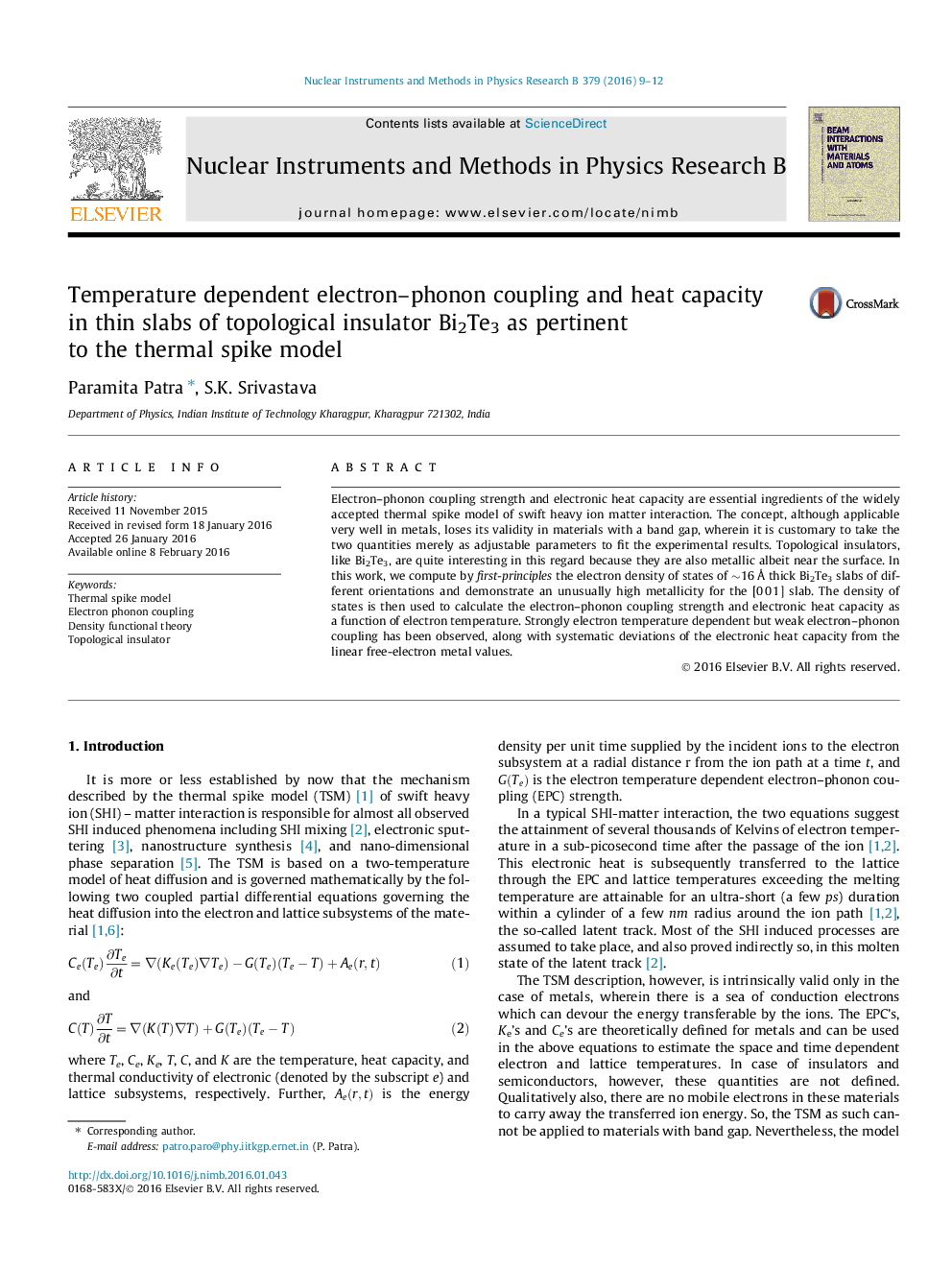| Article ID | Journal | Published Year | Pages | File Type |
|---|---|---|---|---|
| 1679717 | Nuclear Instruments and Methods in Physics Research Section B: Beam Interactions with Materials and Atoms | 2016 | 4 Pages |
Electron–phonon coupling strength and electronic heat capacity are essential ingredients of the widely accepted thermal spike model of swift heavy ion matter interaction. The concept, although applicable very well in metals, loses its validity in materials with a band gap, wherein it is customary to take the two quantities merely as adjustable parameters to fit the experimental results. Topological insulators, like Bi2Te3, are quite interesting in this regard because they are also metallic albeit near the surface. In this work, we compute by first-principles the electron density of states of ∼16 Å thick Bi2Te3 slabs of different orientations and demonstrate an unusually high metallicity for the [0 0 1] slab. The density of states is then used to calculate the electron–phonon coupling strength and electronic heat capacity as a function of electron temperature. Strongly electron temperature dependent but weak electron–phonon coupling has been observed, along with systematic deviations of the electronic heat capacity from the linear free-electron metal values.
